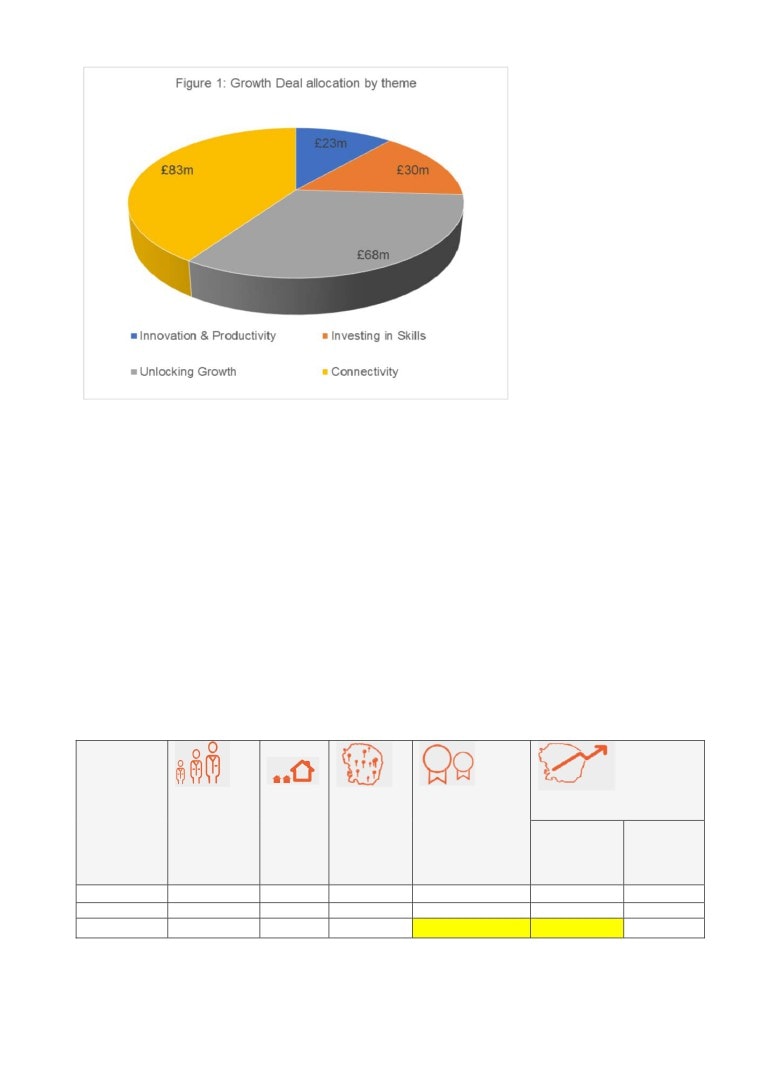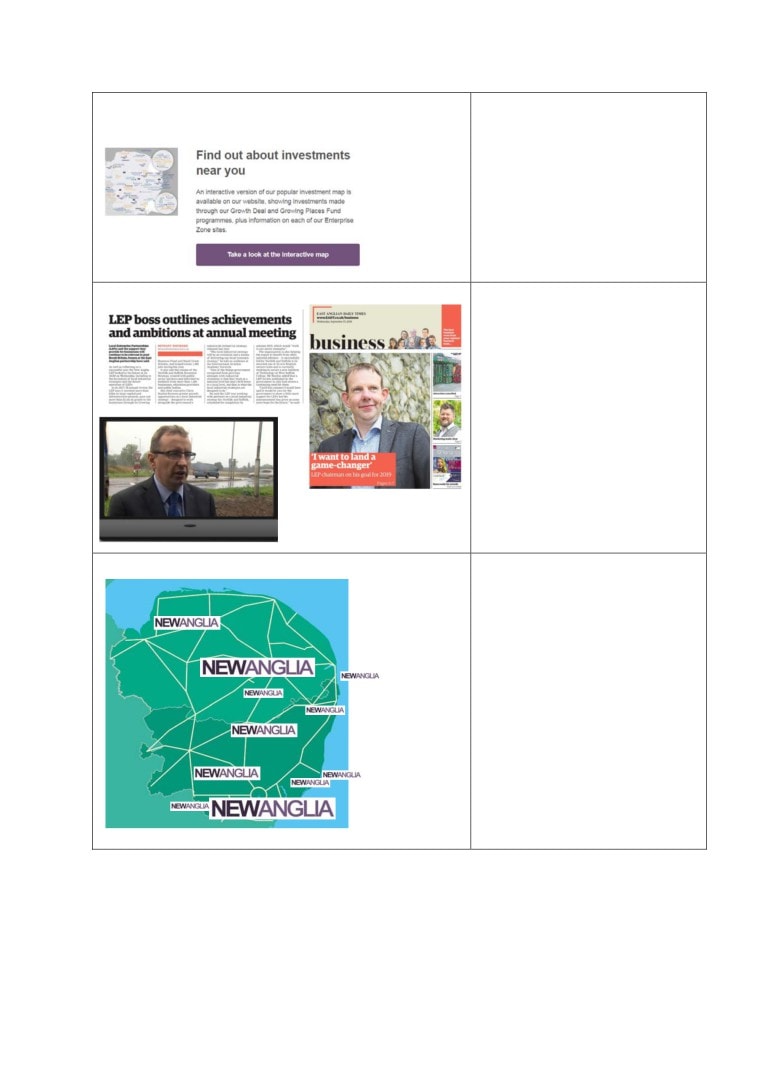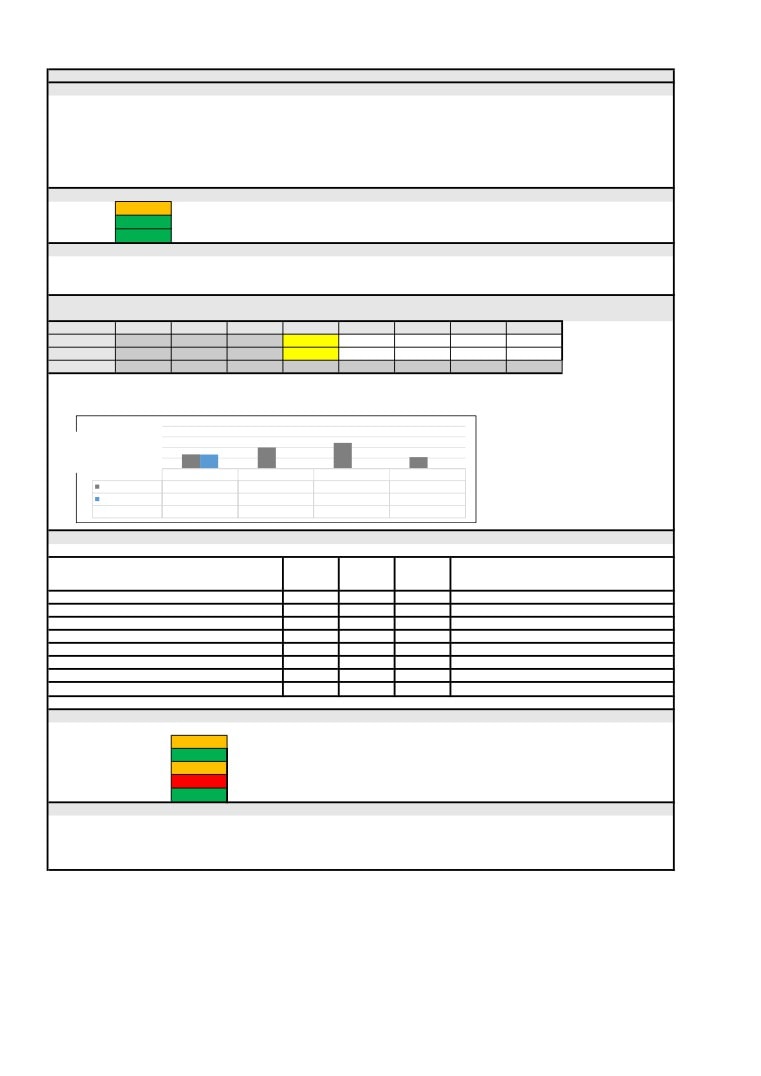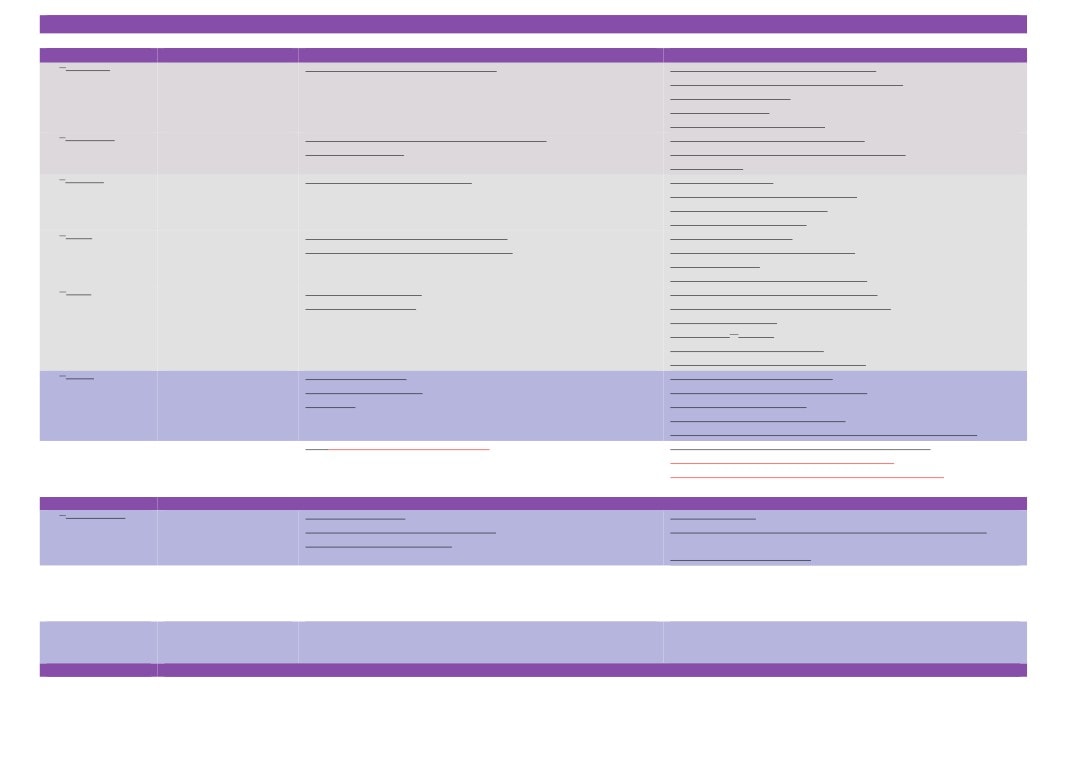New Anglia Local Enterprise Partnership Board Meeting
Thursday 18th October 2018
10.00am to 12.30pm
Sizewell B Visitor Centre, Leiston, Sizewell, IP16 4UR
Agenda
No.
Item
Duration
1.
Welcome
25 mins
2.
Apologies
3.
Welcome to Sizewell & Nuclear Sector Update
4
Declarations of Interest
5.
Actions / Minutes from the last meeting
Forward Looking
50 mins
6.
Opportunity Areas
Update
7.
Brexit
Update
Governance and Delivery
15 mins
8.
LEP Review
For Approval
Break
10 mins
Governance and Delivery
50 mins
9.
Capital Growth Programme Call
For Approval
10.
Innovative Projects Call
For Approval
11.
Eastern Agritech Proposal
For Approval
12.
Chief Executive’s Report
Update
13.
October Performance Report
Update
14.
Finance Report including Confidential Appendices
Update
15.
Board Forward Plan
For Approval
16.
Any Other Business
Next Meeting: 10.00am - 12.30pm, 21st November 2018
Venue:
Keystone Innovation Centre, Thetford
1
New Anglia Board Meeting Minutes (Unconfirmed)
19th September 2018
Present:
David Ellesmere (DE)
Ipswich Borough Council
Doug Field (DF)
East of England Coop
John Griffiths (JG)
St Edmundsbury Borough Council
Matthew Hicks (MH)
Suffolk County Council
Dominic Keen (DK)
High Growth Robotics
William Nunn (WN)
Breckland District Council
Steve Oliver (SO)
MLM Group
Andrew Proctor (AP)
Norfolk County Council
Johnathan Reynolds (JR)
Nautilus
Lindsey Rix (LR)
Aviva
Sandy Ruddock (SR)
Scarlett & Mustard
Alan Waters (AW)
Norwich City Council
Jeanette Wheeler (JW)
Birketts
Tim Whitley (TW)
BT
In Attendance:
John Last (JL)
NUA (For David Richardson)
Corrienne Peasgood (CP)
Norwich City College (For Nikos Savvas)
Vince Muspratt (VM)
Norfolk County Council
Sue Roper (SuR)
Suffolk County Council
Shan Lloyd (SL)
BEIS
Abigail Cunnliffe-Hall (AC)
BEIS
Fiona Wright (FW)
CMS (For Item 5)
Neil Prentice (NP)
Jacob Bailey (For Item 5)
Chris Dashper (CD)
New Anglia LEP (For Item 12)
Julian Munson (JM)
New Anglia LEP (For Item 5)
Lisa Roberts (LiR)
New Anglia LEP (For Items 6 and 7)
Chris Starkie (CS)
New Anglia LEP
Rosanne Wijnberg (RW)
New Anglia LEP
Helen Wilton (HW)
New Anglia LEP
1
3
Actions from the meeting: (19.09.18)
Brexit Analysis: Brexit to be added to the Board Forward Plan in November
HW
Eastern Agri-Tech: CS to present a paper at the October Board on the options available
CS
To provide an update on the delivery timescales of major infrastructure projects including East
EG
West Rail
Performance Reports: Investigate whether the addition of a percentage of financial slippage
RW
would be relevant
1
Welcome from the Chair
Doug Field (DF) welcomed everyone to the meeting including Corrienne Peasgood deputising for Nikos
Savvas, John Last deputising for David Richardson and Abigail Cunnliffe-Hall from BEIS. DF also
welcomed Fiona Wright from CMS and Neil Prentice from Jacob Bailey.
2
Apologies
Apologies were received from: Nikos Savvas and David Richardson
DF proposed bringing forward Item 5 on the agenda.
5
Place Brand Development for Norfolk and Suffolk
Steve Oliver (SO) introduced the place branding presentation and thanked Julian Munson &
Hayley Mace for their work carried out to date.
He advised the Board that a steering group had been established to progress the next steps
and requested feedback from the board on the proposals.
Fiona Wright (FW) and Neil Prentice (NP) provided the meeting with a presentation on the
place branding experience of both agencies and gave an introduction to their proposals
and the timeline for reporting back to the Board.
The Board was advised that work would begin immediately with stakeholder sessions already
planned for October with completion by the end of January 2019. The final project findings will
be presented to the Board in February 2019.
The Board agreed:
To note the content of the presentation
3
Declarations of Interest
DF declared an interest in the investments in Novafarina and Supapass as detailed in the New Anglia
Capital report.
He also noted that the Co-Op do work with Jacob Bailey although he was not part of the branding tender
process.
4
Minutes of the last meeting 20th June 2018
The minutes were accepted as a true record of the meeting held on 20th June 2018.
Actions from previous meetings updated as follows:
Brexit Analysis: Lindsey Rix (LR) requested an update on the LEP’s response to the
uncertainties facing businesses regarding Brexit. The Board agreed that this was a major issue
and the LEP needed to be proactive in proving support. Chris Starkie (CS) proposed adding
an item to the Board forward plan. It was agreed that this would be included in November.
Andrew Proctor (AP) requested the item be expanded to include the impact on Local
Authorities as well as businesses.
Lisa Roberts (LiR) updated the meeting on the LEP’s ongoing work and Brexit analysis carried
out to date.
Agri-Tech: CS advised the Board that the Combined Authority Business Board was due to hold
its initial meeting on 24th September and a paper on funding of the Agri-tech initiative would go
to its November Board. Given the delay in receiving a response from the Combined Authority
2
4
DF asked CS to produce a paper on the options available to the New Anglia LEP. This will be
presented at the October Board.
ACTION:
Brexit Analysis: Brexit to be added to the Board Forward Plan in November
HW
Eastern Agri-Tech: CS to present a paper at the October Board on the options available.
CS
6
Economic Strategy Delivery Plan
LiR updated the Board on the work carried out to date to progress the Economic Strategy
delivery plan since the publication of the strategy in the Autumn of 2017.
The Board was advised that the Economic Strategy Delivery Coordinating Board (ESDCB) had
been established and met for the first time on 4th September. It would continue to meet every
6-8 weeks to oversee the delivery of the plan.
LiR advised that the concept of game changer opportunities had emerged through the
engagement sessions which are those with the potential to deliver significant progress towards
targets.
LiR requested that the Board approve the Game Changers Approach to the delivery of the
strategy. On approval the LEP team will progress work to identify those opportunities and build
plans for their delivery.
AP supported the approach and asked how the game changers had been identified to date and
what others has been considered.
LiR advised that the specific game changers had not yet been identified and this would form
part of the next stage of the work.
The meeting discussed the importance of infrastructure to the delivery of the plans and LiR
noted that the smart infrastructure ran through all the opportunities presented.
David Ellesmere (DE) asked how the make up of the Board had been agreed and whether the
priority growth areas would be included.
Alan Waters (AW) expressed concern that the urban areas did not have a specific place on the
Board.
CS advised that Local Authorities had been asked to put forward place representatives. He
advised that, when requested, the Norfolk Chief Executives had provided details of their
representatives and the Suffolk Growth Board agreed those from Suffolk.
LiR advised that there was a rotating vacant seat on the Board whereby the Suffolk Chief
Executives could attend depending on the agenda of the meeting.
Vince Muspratt (VM) confirmed that for Norfolk there was a rotating representative who
represented Greater Norwich.
The Board agreed:
To note the progress the development of the Economic Strategy delivery plan for the
Economic Strategy
To adopt the concept of developing Game Changers.
That the ESDCB should also coordinate development of the Local Industrial Strategy
7
Local Industrial Strategy
LiR presented the paper to the Board detailing the context for Local Industrial Strategies, its
link with the Economic Strategy and the proposed approach to developing a Local
Industrial Strategy for Norfolk and Suffolk.
LiR noted that Government have advised all LEPs to produce a Local Industrial Strategy and
Shan Lloyd (SL) confirmed that while the sign off strategy had yet to be agreed it would include
analysis of the evidence used in the production of the strategy.
The LEP aims to produce its strategy by Autumn 2019 however guidance is constantly being
taken from Government.
3
5
Corrienne Peasgood (CP) noted that a local strategy needed to include developments at a
national level to assess how they can be incorporated locally.
CS stated that the strategy needed to identify specific areas where the New Anglia area held a
distinct position and the work would continue to drill down in the sectors identified to date to
focus on the areas of distinctness.
Tim Whitley (TW) agreed that it was vital to identify those areas that Norfolk and Suffolk lead
on a national level.
LR made the observation that there seemed be a conflict between productivity and innovation
between the Local Industrial strategy and the UK Shared Prosperity Fund.
LiR confirmed that work would continue to expand the evidence base and leaders would have
the opportunity to review the work at 3 different stages.
The meeting discussed the complexity of the funding available.
SO thanked the LEP team for their work and expressed his support for the approach and noted
it was vital to identify those opportunities which would provide a compelling argument to
Government for funding.
John Last (JL) noted the importance of highlighting those sectors which, although not
necessarily the largest, would affect the position of the region at a national level.
The Board agreed:
To note the content of the report
To agree the approach to developing the Local Industrial Strategy.
8
LEP Review
CS presented the paper included in the meeting pack detailing the key requirements for the
LEP Review and the impact on New Anglia LEP.
A key issue to resolve is the removal of overlaps. New Anglia LEP is proposing to retain its
existing geography.
The Board was informed that those areas of Norfolk and Suffolk currently covered by both New
Anglia and the Cambridgeshire and Peterborough Combined Authority (CA) have advised that
they intend to remain with the New Anglia LEP and the process to ratify this decision is
ongoing.
At the same time the CA is likely to make its LEP boundaries coterminous with its own thus
removing the overlap.
SO asked what strengthening links with the CA would mean in practice.
CS advised that this had yet to be decided but could take the form of an overriding formal
agreement or agreements on specific issues where combined working was beneficial to all
parties.
The Board agreed:
To note the content of the report and the recommendations of the LEP review
To agree the LEP submission on geography
9
Chief Executive’s Report
CS presented his report to the Board and highlighted key items.
Johnathan Reynolds (JR) updated the Board on a meeting held with the UEA on CO2
reduction targets and their inclusion in the Economic Strategy with the aim of targeting specific
areas producing the greatest results.
JL asked for an update on East West Rail. CS confirmed that the LEP was now a full member
of the consortium but that the last meeting had focussed on the central area. Further details
will be provided in the future. The Board requested further details of the delivery timescales.
ACTION: LEP Infrastructure Manager Ellen Goodwin (EG) will be asked to provide an update
on the delivery timescales for this and other major infrastructure projects.
4
6
CS reviewed progress on sector deals noting the difficulty in becoming involved in some areas
such as life sciences.
AP queried the slippage on Growth Deal spend as it had been described as significant at the
Audit and Risk Committee meeting. CS confirmed that the slippage was significant but that
work was ongoing to manage it.
Matthew Hicks (MH) queried the timing of the visit to Holland in January given that Brexit would
take place shortly after. CS advised that there was already an event planned at this time
therefore the visit coincided with existing plans.
MH asked how previous attendance at MIPIM had been benchmarked. CS advised that
feedback was provided to the Board and metrics on leads were collected.
JW asked if longer term outputs could be tracked and reported back to the Board.
JR also asked whether any learning from MIPIM could be transferred to other similar events.
The Board agreed:
To note the content of the report
To receive up update on delivery timescales for the East West Rail project and other
major infrastructure projects
EG
10
Programme Performance Reporting
Rosanne Wijnberg (RW) presented her report as included in the meeting pack which addresses
the recommendations made by PWC.
LR queried the reporting cycle and format for the New Anglia Capital (NAC) report and
requested a more formal process. The current bi-annual report was agreed to be appropriate
and RW agreed to include this in the reporting cycle.
The Board agreed:
To note the content of the report
To approve the reporting cycle with the inclusion of NAC
To approve the reporting template
11
September Programme Performance Reports
RW presented the reports included in the meeting pack.
RW reviewed the Growth Deal Performance Report in detail.
Sandy Ruddock (SR) requested clarification of the level of slippage and asked if a percentage
of the slippage would be relevant.
CD reviewed the NAC report as included in the meeting papers.
The Board agreed:
To note the content of the reports
To approve the Growth Deal Quarterly Dashboard
For RW to investigate whether the addition of a percentage of slippage would be relevant
RW
12
Finance Report
RW reviewed the finance report and asked for questions from the Board.
RW advised the Board that the AGM would be asked to confirm that the authority to agree
remuneration of the auditors and the responsibility to appoint new auditors be delegated to the
Board.
RW confirmed that the Audit and Risk Committee had gone out for tender and had held a panel
with Price Bailey recommended as the new auditors.
The Board agreed:
To note the content of the report
13
Board Forward Plan
CS reviewed the items to be covered at the October Board meeting
5
7
The Board agreed:
To note the content of the plan
14
Any Other Business
DF reviewed the agenda of the AGM which would follow the Board Meeting.
John Griffiths (HG) highlighted the upcoming West Suffolk Business Festival and also the Building
Foundations event on 16th October and invited Board members to attend.
Next meeting:
Date and time of next meeting:
10.00am - 12.30pm, 18th October 2018
Venue: Sizewell B Visitor Centre, Leiston, Sizewell, IP16 4UR
6
8
Actions from New Anglia LEP Board Meetings
Date
Item
Action
Update
Actioned By
Status
19/09/2018
September Programme
To investigate whether the addition of a percentage of financial slippage would
RW reviewed the reports with Sandy Ruddock &
RW
Complete
Perforamance Reports
be relevant
agreed that this was not required
19/09/2018
Chief Executive's Report
To provide an update on the delivery timescales of major infrastructure projects
An update will be provided a the November Board
EG
On-Going
including East West Rail
meeting
21/02/2018
Economic Indicator
To receive a paper on CO2 reductions for
Work is ongoing in conjunction with the UEA
CS/JR
On-Going
Trajectories and Targets:
consideration of inclusion in the economic strategy targets
21/02/2018
Brexit Analysis
To receive an action plan detailing the next steps, timescales and measures of
A paper is being presented at the October Board
LiR
On-Going
success
meeting
22/11/2017
Business Performance
To receive a proposal on the Eastern Agi-Tech initiative by email.
A paper will go to the November Combined
CS
On-Going
Reports
Authority Board meeting. A paper detailing
options for the New Anglia Board is being
presented at the October meeting.
9
New Anglia Local Enterprise Partnership Board
18th October 2018
Agenda Item 6
An Update on the work of the Norwich and Ipswich Opportunity Areas
Author: Jacqueline Bircham
Summary
This paper sets out the planned outcomes of the Opportunity Area programme in Norwich and
Ipswich and accompanies a presentation on progress to date by Katrina Gardiner, Programme
Manager for the Ipswich OA, and Jacqueline Bircham, Programme Director for Norwich.
Recommendation
The board is asked to note the ambition and progress of the Norwich and Ipswich Opportunity
Area projects.
Background
Opportunity Areas are a Department for Education project to improve social mobility in 12 areas
in England that ranked in the bottom 10% of areas in the Social Mobility Index 2016. The
delivery plan for Norwich Opportunity Area was published in October 2017, and for Ipswich in
February 2018. These plans set out a strategy to improve social mobility in their respective
areas supported by £6m of funding.
Key Considerations
Both areas have some challenging targets to be achieved by September 2021:
Norwich:
Ipswich:
•
95% of eligible three to four year olds and
•
The gap between the percentage of
75% of eligible two year olds will be
disadvantaged pupils and all other pupils
benefitting from funded early education.
achieving a good level of development at
•
The proportion of children achieving a
the end of Early Years Foundation Stage
good level of development will be in the
will be half what it was in September 2017.
top half for all local authority districts in
•
The gap between the pupil absence rates
England.
for disadvantaged pupils and non-
•
Attainment at key stage 2 and key stage 4
disadvantaged pupils will be half what they
will be in the top half of all local authority
were in September 2017.
districts in England.
•
50% of fourteen to nineteen year olds will
•
50% of nineteen year olds will be qualified
be engaging regularly in youth social
to level three.
action.
•
The gap between the attainment of
•
Childcare and education professionals will
disadvantaged pupils and all pupils will be
report a higher level of job satisfaction
half what it was in September 2017.
•
The full time teacher vacancy rates in
1
11
•
The rate of fixed term and permanent
primary and secondary schools will have
exclusions will have reduced by two thirds
reduced and will be below national
from the rate in 2016/17
average.
•
90% of the
2018-19 cohort who were
•
The proportion of NLEs per 1000 primary
eligible for pupil premium in year eleven
and secondary pupils in Ipswich is at least
will be in a sustained destination 6 months
equal to national average.
after completing key stage 4
•
Attainment at key stage 2 and key stage 4
•
40% of young people in Norwich will go on
will be in the top half of all local authority
to higher education or a higher level
districts in England and the gap between
apprenticeship
the attainment of disadvantaged pupils
•
85% of pupils who were eligible for pupil
and all pupils will be half of what it was in
premium in year eleven and who studied
September 2017.
for a level three qualification will go on to a
•
The proportion of pupils achieving level 2
sustained destination after key stage 5
in English and maths by age
16 will
exceed the national average.
•
95% of disadvantaged young people will
be in a sustained positive destination for at
least the first two terms after finishing key
stage 4, and 90% after finishing key stage
5.
•
44% of disadvantaged young people will
go on to higher education.
•
The percentage of sixteen to eighteen year
olds who are NEET will be half what it was
in September 2017.
•
By 2021, all schools in Ipswich will have
achieved at least six Gatsby Benchmarks
Link to the Economic strategy
Improved aspiration and educational attainment in Norwich and Ipswich, particularly by young
people from families and areas that have traditional faced significant deprivation will contribute
to the aim for Norfolk and Suffolk to be an inclusive economy with a highly skilled workforce. It
is DfE’s aim that learning from Opportunity Areas can be shared in similar contexts throughout
England.
Next Steps
By December 2018 both areas will need to have committed their £6m of funding to projects that
work towards the aims stated above. Work continues to ensure schools and colleges are
engaged, and supported to achieve the programme outcomes.
Recommendation
The board is asked to note the ambition and progress of the Norwich and Ipswich Opportunity
Area projects.
2
12
New Anglia Local Enterprise Partnership Board
Thursday 18th October 2018
Agenda Item 7
Brexit
Author: James Allen Presenter: Chris Starkie
Summary
This paper sets out the latest state of play in the Brexit negotiations and briefly outlines what
each scenario would mean for the UK following its departure from the European Union (EU).
The paper also outlines the role of the LEP in assisting businesses in the run up to Brexit and
post March 31st 2019.
The LEP’s role covers four headings. 1 Providing Brexit intelligence to Government. 2 Providing
information to businesses on changes brought about by Brexit. 3 Work to shape the future
funding landscape for business support. 4 Identify changes to LEP and other programmes to
react to opportunities and threats posed by Brexit.
These four headline areas will form the basis for the LEP’s minimise response to Brexit which is
should be to minimise uncertainty for business and deliver our ambitions for the Economic
Strategy for Norfolk and Suffolk regardless of the outcome of Brexit negotiations.
Recommendation
The Board is asked to:
Agree the proposed approach for the LEP to manage business uncertainty and deliver
the Economic Strategy regardless of the nature of Brexit.
For Brexit to be added as a standing item to the board going forward.
Background
Following the UK’s decision to leave the EU on 23rd June 2016, the official date for the UK’s
departure is 29th March 2019. A transition period has been agreed between 29th March 2019 to
31st December 2020 to allow time to complete final preparations ahead of the new post-Brexit
rules coming into force. However, this transition period will only commence if a withdrawal
agreement is reached between the two parties. A suitable agreement needs to be found on the
Irish border situation to allow both parties to sign the withdrawal agreement.
Cabinet reached an agreement in July 2018 regarding the UK’s vision for the future UK-EU
relationship, known as the Chequers Plan.
This would effectively continue "harmonisation" with EU rules on the trade in goods, covering
only those necessary to ensure frictionless trade; there would be different arrangements for
trade in services with greater "regulatory flexibility" and "strong reciprocal arrangements";
freedom of movement as it stands would end but a "mobility framework" would ensure citizens
can continue to travel and apply for study and work; a new customs arrangement would be
1
13
phased in; the UK could control its own tariffs and develop an independent trade policy; and the
ECJ’s jurisdiction would end.
However key elements of the Chequers Plan were rejected at the most recent informal EU
Summit in September. Negotiations have continued behind the scenes as both sides come
back to the table at the European Council on 18-19th October. If enough progress can be found
at this meeting, then an informal EU Summit will be organised for 17-18 November to finalise
and formalise a deal. Since the September Summit, EU leaders have been more optimistic that
a deal can be secured.
A political declaration setting out the future UK-EU relationship, which will accompany the
withdrawal agreement, is currently being prepared by the EU and will set out the latest state of
play when published in draft format ahead of the October EU Summit. This non-binding
document is key to the ratification of the UK-EU deal as it will map out the proposed future UK-
EU relationship to be agreed upon during a transition period.
As things currently stand a few months away from the official date of departure, several options
remain on the table: The Chequers Plan, a Canada-style option (CETA), a Norway-style option
(EFTA), an extension of the Article 50 negotiations or a no-deal scenario in which both sides
are unable to reach a withdrawal agreement.
There are several differences between these options:
Canada has comprehensive but not complete tariff free trade in goods, limited access to
trade in services, partial regulatory cooperation and an independent free trade policy.
The deal excludes financial contributions to the EU, free movement of persons,
regulatory equivalence and participation in common foreign and security policy.
Norway has tariff free trade in all goods and services (excluding certain fish and
agricultural products; free movement of persons; a financial contribution to the EU;
implementation of all EU Single Market regulations. This deal excludes participation in
current and future EU-third party trade deals, preferential access to the Single Market
for agriculture and fisheries products, trade in goods without non-tariff barriers such as
export licences and rules of origin and Common Agricultural Policy participation and
funding.
A no-deal would be a cliff-edge scenario in which the UK would revert to WTO trade
rules on 29th March 2019 and would be subject to the EU’s external tariffs, EU laws
would be transferred in to the UK’s lawbook, the UK would not be subject to ECJ
rulings, the UK could implement free trade negotiations immediately, the Irish border
question would remain unresolved, the UK would not be required to pay the £13bn
contribution to the EU budget and on immigration - the UK would be free to set its own
immigration rules, however the rights of EU and UK expats remains unclear. Customs
procedures would be suddenly imposed between the UK and EU and this alongside
international law obliging the EU to require checks on lorries and ships coming from the
UK would cause delays and backlogs at European ports. The UK Government has set
out a series of technical notes on how to prepare if there is a no-deal.
Before the end of January 2019, MPs will be offered a vote on the outcome of negotiations -
whether a deal has been secured or not.
This vote could lead to a few options including agreement on a final deal, rejection and leaving
without a deal, seeking to extend the Article 50 negotiations or a call for one final push in
negotiations to agree on an acceptable compromise.
In September 2018, the Migration Advisory Committee published its final report on EEA
migration in the UK. The report states that if free movement ends and the Tier 2 scheme is
extended to EEA citizens, the salary threshold at £30,000 should be retained and the list of
eligible occupations should be expanded to allow employers to hire migrants into medium-skills
jobs.
2
14
The report does not recommend an explicit work migration route for low-skilled workers, except
for a seasonal agricultural workers scheme.
LEP Brexit activity to date
The LEP’s Economic Strategy was published some months after the UK’s decision to leave the
EU alongside a comprehensive economic evidence base.
This means that the Economic Strategy takes into account the decision to leave, but does not
assess the potential impact in any detail.
To address this, the LEP commissioned Metro Dynamics to carry out more detailed work on the
potential impacts on the workforce, trade, regulations and funding for key sectors. We
commissioned Metro Dynamics as they were also involved in the development of the Economic
Strategy and this ensured consistency of research.
The report can be found at this link: ‘the potential implications of Brexit for Norfolk and Suffolk’
It identified a series of recommended actions which were endorsed by the LEP board at its
meeting in February.
1. Develop a Local Industrial Strategy
2. Develop our sector and innovation strengths
3. Drive Inward Investment and place marketing
4. Gather Brexit intelligence
5. Champion local businesses
6. Improve targeting of business support.
7. Support exporters
8. Collaborate with other parts of the UK
LEP Brexit activity going forward
All eight of the actions listed above are being taken forward.
However the discussion at September’s board meeting highlighted the need to take a step back
and agree the role the LEP can play in the Brexit process, and for the issue of Brexit to be more
visible in the work of the LEP. A more comprehensive action plan, building on the initial eight
point plan can then be developed.
The LEP Executive is recommending the LEP’s role should be summarised under the four
headings: Intelligence, advice, funding, strategic intervention.
All four are inter-related but distinct workstreams. They are: Intelligence, Advice, Funding,
Strategic Opportunities.
1 Intelligence
The LEP will continue to act as an information resource to government. Following engagement
with business, business intermediaries and local authorities, the LEP has been able to regularly
feedback Brexit intelligence and highlight the state of business preparedness into Government
through various channels.
3
15
For example, Sajid Javid MP and Steve Baker MP visiting the region to understand the
implications, anecdotal feedback the LEP regularly provides Shan Lloyd, feeding relevant case
studies to local MPs and continued regular dialogue with business intermediaries to discuss
business preparedness and understand their latest Brexit analysis.
2 Advice
From an operational perspective, the LEP has an important role to play in the continued
provision of information to the business community regarding the future relationship with the
EU. We are currently working on a plan to provide succinct information on areas of concern to
businesses including the finer details, once available, regarding what the future UK-EU
relationship will mean for businesses across Norfolk and Suffolk.
The Growth Hub will be a valuable resource in providing advice and support to businesses
post-Brexit. The LEP is proposing to set up an identical Brexit page on the LEP and Growth
Hub websites for businesses to provide intelligence, seek advice and access useful resources
such as information provided by Government, local government and business intermediaries
(e.g. the Chamber’s business Brexit checklist).
We have had positive discussions with the chambers, FSB and CBI on a collaborative
approach around this. LEPs nationally are looking at what resources can be shared and utilised
by respective growth hubs.
3 Funding
The LEP is working both regionally (with local authorities and MPs) and nationally to help shape
the future of funding. The LEP alongside these partners has been making the case to Defra
regarding transitional funding as this funding is scheduled to end in 2019. The consultation has
now begun on the UK Shared Prosperity Fund, which will cover previous EU and domestic
funding moving forward.
The LEP fed into the regional workshop in Norwich on 4th October and will continue to highlight
the region’s needs given the fund will be linked to the delivery of our Economic Strategy and
Local Industrial Strategy.
4 Strategic Opportunities
The LEP is delivering on the ambitions set out in the Economic Strategy and many strategic
actions being taken will be linked to Brexit, whether this is nurturing opportunities or addressing
potential challenges.
The LEP is in the process of assessing whether programmes require adjusting so that they
remain fit for purpose post-Brexit and whether strategic interventions may be required to
continue to deliver business growth (e.g. experts in the Growth Hub on specific Brexit-related
issues such as customs).
Next Steps
We welcome the Board’s views on these proposed actions and welcome proposals for
additional support measures to minimise uncertainty for business and deliver the Economic
Strategy for Norfolk and Suffolk regardless of the nature of Brexit.
If the board agrees to the four headline workstreams, the LEP executive will bring work up short
delivery plans for each of the four workstreams. These would include key activities proposed,
timelines, resources and impact.
4
16
The first three workstreams are relatively self-contained. The fourth will be more complex and
to a greater extent dependent on the outcome of Brexit talks.
Updates on the workstreams would then be brought back to the board on a regular basis.
Recommendation
The Board is asked to:
Agree the proposed approach for the LEP to manage business uncertainty and deliver
the Economic Strategy regardless of the nature of Brexit.
For Brexit to be added as a standing item to the board going forward.
5
17
New Anglia Local Enterprise Partnership Board
18th October 2018
Agenda Item 8
LEP Review
Author: Chris Starkie
Summary
This paper summarises New Anglia LEPs’ proposed plan for the implementation of the LEP
Review.
Following last month’s paper on geography, this paper covers roles and responsibilities,
leadership and organisational capacity and accountability and performance.
In most cases no changes to the structure or operating model of New Anglia LEP is required,
but the paper makes a number of specific recommendations on areas where Government is
requiring change.
Recommendation
The board is asked to approve the implementation plan for the LEP Review as laid out in this
paper and specifically:
Maintain its existing approach to the recruitment of its chair.
Appoint a deputy chair by February 28th 2019.
Amend the LEP’s articles of association to class education members as private sector.
Amend the LEP’s articles of association to increase the number of private sector board
members to 12.
Agree to work towards increasing the female representation amongst private sector
board members. This will include proactively raising the profile of the LEP amongst
female business leaders.
Ask the LEP chair to write to education and local authority members to highlight the
gender balance recommendations in the LEP Review and ask for support in helping the
LEP board achieve the targets set by Government.
1
19
Background
At last month’s board meeting the LEP board agreed to submit a proposal to the Government
around the LEP’s geography which would retain the geography of New Anglia LEP as Norfolk
and Suffolk.
The Government now requires LEPs to submit proposals around three further areas: 1 roles
and responsibilities, 2 leadership and organisational capabilities and 3 accountability and
performance.
Key issues
1 Role and responsibilities
The review stated that the primary role of LEPs is on enhancing productivity which will be
achieved through the development of Local Industrial Strategies.
The review reiterated that LEPs will lead on the development of Local Industrial Strategies and
all LEP areas will agreed their LIS with Government by early 2020.
As board members know, the LEP has begun preparatory work on our Local Industrial Srategy,
with a view to publishing ours in autumn 2019.
LEPs are also now required to produce an annual delivery plan and end of year report. We will
be working with Government colleagues on the desired format for this. The first delivery plan
will be for April 2019 and end of year report a year later.
Our aim will be to create a delivery plan which is useful for board members as well as
Government.
2 Leadership and organisational capacity
Appointment of chair and deputy chair
Government has stated it expects each LEP to consult widely and transparently with the
business community before appointing a new chair and appoints a deputy chair.
Under our current processes, the chair of the board is appointed by the LEP board.
Our process invites applicants from board members to put themselves forward for selection by
other board members.
In the event there are no candidates from the board, then the position of chair is advertised
externally.
This approach ensures that the new chair has the full support of the board, and also has
practical experience of the LEP. It also enables a degree of continuity.
We are recommending that the LEP board retains its existing policy.
The Government review also requires LEPs to appoint a deputy chair by the end of February
2019. The advice does not explicitly state whether this should be a private sector board
member, but this is understood to be the case.
New Anglia LEP’s articles of association provide for a deputy chair or vice chair, and indeed the
LEP used to have a vice chair, but the post is currently not filled.
We recommend that the post of deputy chair is filled.
2
20
The Review asks LEPs to agree defined term limits for chairs and deputy chairs. Our defined
term limit is three years which complies with the request.
Private sector board representation
The Government wants to increase the proportion of private sector board members, whilst
limiting board sizes to 20. The Government’s aspiration is for two thirds of the board to be from
the private sector.
Currently New Anglia LEP has a 50 / 50 split. This is made up of six local authority leaders, two
education sector representatives (one from FE and one from HE) and eight private sector board
members.
Government has confirmed that HE members can be classed as private sector and for local
areas to determine if FE members should also be classed as private sector.
We are recommending that both education members should be classed as private sector. It
would seem odd for HE to be classed one way and FE the other.
The recruitment of two additional private sector board members would then enable the LEP to
be compliant with the LEP Review. The revised board size would be 18 members of whom 12
were private sector and six public sector.
We are recommending amending the LEP’s articles of association to class education
members as private sector and increasing the number of private sector board members
to 12.
In addition, the education board members, if classed as private sector members, would also
need to adhere to the term periods. That is a maximum of two terms of three years.
Board gender balance
The Government has also set a target of one third female board members by 2020 and
expectation of 50/50 by 2023.
Currently we have three female board members out of a board of 16.
We recommend that the LEP board agrees to work towards increasing the female
representation amongst private sector board members.
This will include proactively raising the profile of the LEP amongst female business
leaders.
In addition, we recommend the LEP chair writes to our education and local authority
members to highlight the recommendations in the LEP Review and asks for support in
helping the LEP board achieve the targets set by Government.
Independent secretariat
The review requires LEPs to have a secretariat independent of local government to support
LEP’s decision making.
New Anglia LEP already complies with this requirement.
3 Accountability and performance
Legal personality
The review requires LEPs to have a legal personality. The preferred model is for incorporation -
which is New Anglia LEP’s model.
3
21
Single accountable body
The review requires LEPs to have a single accountable body. We already do - Suffolk County
Council.
Annual General Meeting
The review asks LEPs to hold annual general meetings and open them to the public.
New Anglia LEP already does.
LEPs are also not permitted to operate on a paid membership basis. We don’t operate that
model.
Governance
LEPs have been asked to set out who is responsible for spending decisions, appointments and
overall governance.
These are already set out in our Local Assurance Framework. Chris Starkie is on the national
working group looking at the new National Assurance Framework and we will update our own
assurance framework as soon as the new national framework is published.
Scrutiny and oversight
The review asks LEPs to indicate how they will ensure external scrutiny and expert oversight.
The LEP regularly participates in relevant local authority scrutiny panels.
The LEP’s Audit and Risk Committee provides oversight and monitoring of audit, risk and
ensures compliance with the assurance framework. It has an independent Chair appointed by
the LEP Board and its other members are the Section 151 Officer of the Accountable Body and
two LEP board members who are also appointed by the LEP Board.
As a company limited by guarantee our accounts are audited annually by independent auditors.
We therefore comply with all the scrutiny and oversight requirements laid out in the review.
Recommendations
The board is recommended to approve the implementation plan for the LEP Review as laid out
in this paper and specifically:
Maintain its existing approach to the recruitment of its chair.
Appoint a deputy chair by February 28th 2019.
Amend the LEP’s articles of association to class education members as private sector.
Amend the LEP’s articles of association to increase the number of private sector board
members to 12.
Agree to work towards increasing the female representation amongst private sector
board members. This will include proactively raising the profile of the LEP amongst
female business leaders.
Ask the LEP chair to write to education and local authority members to highlight the
gender balance recommendations in the LEP Review and ask for support in helping the
LEP board achieve the targets set by Government.
4
22
New Anglia Local Enterprise Partnership Board
Thursday 18th October 2018
Agenda Item 9
Capital Growth Programme: Focused Call
Author: Emily Manser / Chris Dashper. Presenter: Chris Dashper.
Summary
The Capital Growth Programme has £19m of capital funding remaining to be allocated and
spent by March 2021.
As has been outlined in previous Board papers, the intention with this final allocation of funds is
to launch a targeted call for strategic projects that will help to deliver the Economic Strategy for
Norfolk and Suffolk.
This paper recommends that the strategic focus and launch of the call for projects should be
Skills, Innovation and Productivity.
This paper was discussed at the Investment Appraisal Committee in September and is
recommended for approval.
Recommendation
The Board is asked to: Approve the launch of a focused call on Skills, Innovation and
Productivity, to allocate the remaining
£19m of the Capital Growth Programme, following
recommendation by the Investment Appraisal Committee.
Background
A Capital Growth Programme call for projects was launched in October 2017 for a wide range
of infrastructure projects that help to deliver the new Economic Strategy. As a result of this call
the Board approved funding for seven projects, as follows:
Bacton Flood Scheme
£1,080,000
Cefas Research Centre
£1,400,000
Snetterton Electricity Scheme
£2,650,000
A140 Hempnall Roundabout
£650,770
Eye Airfield Link Road
£1,460,000
Great Yarmouth Flood Defences
£8,200,000
Snape Maltings Flood Defences
£125,000
Honingham Thorpe Food Enterprise Park
£1,000,000
Total
£16,565,770
1
As outlined in earlier papers on the call, and in our bid to government for the Capital Growth
Programme (‘Growth Deal Three’), the intention is to allocate the remaining funding to strategic
projects.
This would enable the LEP to focus its investment on areas that best meet the needs identified
in the Economic Strategy.
To identify the focus of the new project call, a review of the current Growth Deal investment and
profiled impact has taken place. This is summarised below.
An analysis of the geographic spread of projects shows a good geographic spread of LEP
investment across the area, and across the priority places identified in the Economic Strategy.
Growth Deal investment by theme
The Government funding award for Growth Deal is £223m. £204m of this is allocated to
projects or programmes, as outlined in Figure 1. The remaining £19m still requires allocation.
An analysis of the Growth Deal financial allocation by theme has been undertaken to identify
any gaps in the investment portfolio.
Growth Deal investment can be grouped into four themes:
Innovation & Productivity: projects that boost innovation and productivity in our
economy. This includes innovation centres and Growing Business Fund projects.
Investing in Skills: projects that deliver the higher level skills needed to drive growth
across our economy.
Unlocking Growth: infrastructure that unlocks or protects housing or commercial
developments in our priority places. This includes the Enterprise Zones, flood defences
and Growing Places projects.
Connectivity: projects and assets that improve the infrastructure and which create a
modern, mobile, accessible, future-proof digital connected economy. This includes
investment in Superfast Broadband and transport infrastructure.
These themes were outlined in the LEP’s Growth Deal Three bid to government.
Figure 1 (below) refers to all financial allocations in Growth Deal i.e. the Growth Deal capital
projects, the Capital Growth Programme, and the three other programmes funded by Growth
Deal (Growing Business Fund, Growing Places Fund, Enterprise Zone Accelerator Fund).
2
This shows that the largest proportion of Growth Deal funding has been invested in Unlocking
Growth and Connectivity, which both relate to improving local infrastructure.
Skills and Innovation & Productivity projects have received proportionally less investment
through Growth Deal.
Impact of the Capital Growth Programme
An analysis of the profiled impact of the Capital Growth Programme has been undertaken to
identify any areas where further investment is required.
Figure 2 relates only to the profiled metrics of the Capital Growth Programme, of which £37m
has been allocated so far. This is so that we can assess the specific impact of this programme
so far, against which the LEP has agreed targets with Government.
As Figure 2 does not include the total profiled impact of Growth Deal, it should be noted that we
are profiled to meet or exceed our overall Growth Deal targets.
Figure 2: Profiled impact of Capital Growth Programme
Capital
Growth
Programme
88,000 Net
140,000
30,000 new
66% of the
Grow our economy by
new
new jobs by
successful
population with
£17.5bn by 2036
homes
2036 (New/
businesses
nvq3+ (Learners/
Private
Public
by 2036
match
match
Safeguarded
by 2036
Apprenticeships)
jobs)
Profiled
41640
6300
204
36
£22.55m
£257.5m
Targets
37400
3500
75
380
£120m
£40m
Difference
+4240
+2800
+129
-344
-£97.45m
+£217.5m
This shows that learner/ apprenticeships are under-profiled compared to the target. This
reflects the lower investment in skills as outlined in Figure 1.
3
The under-profiled private match reflects that the largest investment so far has been for
infrastructure projects, which in their nature tend to have more public than private investment.
The above analysis indicates the call should be focused on Skills and Innovation &
Productivity.
An example of a capital skills project that the LEP has invested in is the International Aviation
Academy at Norwich Airport. The LEP invested £3.3m in this £11m project to refurbish a WW2
air hangar on the Norwich airport and create a custom designed facility for aviation training. The
facility is the first of its kind in the UK and facilitates close working between education providers
and the aviation industry. It includes classrooms, engineering workshops and a live aircraft in
an emulation zone for students to work on. The project has created a space to run new courses
and is projected to create over a thousand learners and apprenticeships by 2020.
Key Considerations
Taking on board our investment by theme to date and shortfall in profiled impact, the Board is
being asked to consider the launch of a focused call for projects in the themes of Skills and
Innovation & Productivity. This would allocate the remaining £19m in the Capital Growth
Programme, to be drawn down by January 2021 (to enable the LEP to meet its final deadline of
March 2021).
Three options were considered for allocating the remainder of the Capital Growth Programme.
1: An open call similar to the previous one that was run. The key risk is that it might not meet
the profiled impact of the Capital Growth Programme (as outlined in Figure 2).
2: A targeted commission for specific projects that help to meet the ambitions in the Economic
Strategy. The key risk is that this approach is not open and transparent to allow all possible
projects to come forward.
3: A focused call, which is the preferred option. This would enable LEP investment to be
focused on under-invested areas that help to deliver the Economic Strategy, whilst also being
an open and transparent process.
There is a risk that we will not receive projects that are both strategic and deliverable within the
tight timescales we have to spend the funding.
The LEP is aware of a number of potential projects and therefore believes this is a limited risk.
However, should this risk occur the recommendation would be to run an open call for projects.
There is also a risk that this will exclude strong projects in the other priority themes. This should
be balanced against the need to ensure LEP investment is focused on the Economic Strategy
and meets the profiled impact of the Capital Growth Programme.
Link to the Economic strategy
The call for projects will focus on the following priority themes in the Economic Strategy:
Driving business growth and productivity:
Prioritise digital and physical infrastructure projects to support businesses to develop
and provide the opportunities that new and existing firms need to grow.
Establish new centres of excellence to improve productivity and innovation, providing
new skills for business leaders and employees.
4
Driving inclusion and skills:
Prioritise capital investment on provision that will deliver the future skills our sectors and
workforce need.
Projects will ideally deliver against both of the above priority themes.
We would particularly welcome projects that respond to the game changers identified for our
Local Industrial Strategy, i.e. Agri Food, ICT and Clean Energy.
All projects recommended for approval will be appraised and prioritised against their fit with the
Economic Strategy along with other criteria (outlined in Appendix 1).
Next Steps
Launch focused call for projects: 18 October
Call closes/ deadline for applications: 11 January 2019
Project appraisals: January - February 2019
Investment Appraisal Committee: 27 February 2019
Board decision on projects: 27 March 2019
All new projects are expected to be in progress by 2019, for spend of LEP grant by January
2021 (March 2021 at the latest).
Recommendation
The Board is asked to: Approve the launch of a focused call on Skills, Innovation and
Productivity, to allocate the remaining
£19m of the Capital Growth Programme, following
recommendation by the Investment Appraisal Committee.
5
Appendix 1:
Guidance for Applicants - Capital Growth Programme ‘Call for Projects’
Introduction
New Anglia Local Enterprise Partnership is committed to driving economic growth in Norfolk
and Suffolk. Our ambitions for future growth are set out in the Economic Strategy for Norfolk
and Suffolk for the period 2017 to 2036.
The ambitions are:
•
The place where high growth businesses with aspirations choose to be
•
An international facing economy with high value exports
•
A high performing productive economy
•
A well-connected place
•
An inclusive economy with a highly skilled workforce
•
A centre for the UK’s clean energy sector
•
A place with a clear, ambitious offer to the world
We will deliver these ambitions through actions and investment in priority themes and places.
The themes are:
•
Our offer to the world
•
Driving business growth and productivity
•
Driving inclusion and skills
•
Collaborating to grow
•
Competitive clusters, close to global centres
The priority places are:
• Ipswich
• Norwich and Greater Norwich
• The Norfolk and Suffolk Energy Coast, including Bacton, Great Yarmouth, Lowestoft
and Sizewell, with assets on and offshore
• The Cambridge - Norwich corridor
• The East/West corridors along the A47 from Lowestoft to King’s Lynn and the A14
Felixstowe through Ipswich, Stowmarket, Bury St Edmunds, Newmarket and
Haverhill to Cambridge
• King’s Lynn and the A10 and rail corridor to Cambridge
economic-strategy/
Focused Call
Applications are invited for capital grant support towards the following priority themes and
activities identified in the Economic Strategy:
Driving business growth and productivity:
Prioritise digital and physical infrastructure projects to support businesses to develop
and provide the opportunities that new and existing firms need to grow.
6
Establish new centres of excellence to improve productivity and innovation, providing
new skills for business leaders and employees.
Driving inclusion and skills:
Prioritise capital investment on provision that will deliver the future skills our sectors and
workforce need.
Projects will ideally deliver against both of the above priority themes.
We would particularly welcome projects that respond to the game changers identified for our
Local Industrial Strategy, i.e. Agri Food, ICT and Clean Energy.
The funding is available through the Capital Growth Programme (‘Growth Deal’). It must
contribute to one or more of the following key outputs of the programme:
New high quality jobs
New businesses
New learners/ apprenticeships
Match funding (private and/ or public).
Eligibility criteria
Only Capital projects located within the New Anglia Local Enterprise Partnership area may
apply.
All projects must be:
Able to fully draw down LEP funding by 31 January 2021 (note LEP funding can only be
drawn down in arrears upon satisfactory evidence of costs incurred).
State Aid compliant
Able to demonstrate their contribution to the delivery of the Economic Strategy and Call
Focus through direct and indirect outputs.
Able to demonstrate the need for funding and the additionality achieved by the funding.
It will not be possible to support:
revenue costs
costs that have been incurred before a grant offer is made
items that only benefit an individual or sole business
items that are not directly needed to deliver the proposed work
loan repayments or contributions to general appeals
political or religious activities.
The full application criteria are listed below.
Application process
i) Application Form:
Please submit an application form - to receive a copy of the application form, email
You will need to provide sufficient information to help determine if the project meets the
requirements of the Call.
7
To arrive no later than 5pm on Friday 11th January.
No late submissions will be considered.
ii) Selection criteria
Projects will be scored on a competitive basis against the criteria set out in this call:
Strategic Fit
Fit with Call
Deliverability
Additionality
Economic Return
Key areas will be scored 1-5 for each project, with 5 being the highest.
Table 1 provides further detail (see below).
iii) Selection process
Applications will be subject to a full appraisal by an independent consultant once submitted. A
technical appraisal specialist may be sourced for individual projects if necessary.
The appraisal will be in accordance with HM Treasury Green Book principles of viability, value
for money, achievability, affordability and need.
Once submissions have been received, applicants may be required to respond to queries about
their projects from the LEP programmes team as part of the shortlist process.
The New Anglia LEP Board will consider all applications at its 27 March 2019 meeting and
determine whether to approve or reject each application.
iv) Funding: All projects approved for funding will be subject to a legal agreement drawn up in
conjunction with the LEP’s Accountable Body, Suffolk County Council. The agreement will
include the cycle of anticipated drawdown of funding and the outputs expected to be generated
by the project.
Support
Queries on the completion of the Application Form/ Business Case and process should be
Useful information
Economic Strategy for Norfolk and Suffolk
Applicants should ensure that they are familiar with the standards required for full business
case appraisal at an early stage. Guidance for this can be found at: HM Treasury Green Book
Appraisal and Evaluation in Central Government
In addition, reference should be made to the DCLG Appraisal Guide (December 2016).
8
Table 1: Assessment process
Criteria
5
4
3
2
1
Strategic Fit: An
High - strong strategic fit that
Medium - Good strategic fit. Project
Low- Strategic fit not clear,
assessment will be made
directly supports 5 or more
supports 3-5 ambitions & has a
supports <3 ambitions. Perhaps
against both the themes
ambitions and directly delivers
clear link to actions in themes &
ongoing upkeep or sustaining
and places in the strategy,
specific actions in the themes and
places, but delivers limited
activity, but does not directly
incorporating an
places and / or unlocks other
improvement on business as usual
support an action in a theme or
assessment of the
projects that do. A clear inclusive
and/ or marginal inclusivity.
place or will not bring about net
strategic case for public
growth impact.
additional growth or direct
money, where
inclusive growth impact.
appropriate.
Fit with Call: An
Strong fit.
Moderate fit.
Low fit.
assessment will be made
against the project’s fit
with the project call, with a
robust plan in place to
deliver against the criteria.
9
Criteria
5
4
3
2
1
Deliverability: An
High - Project has owners,
Medium - Plan is high level, with
Low - Project plans not
assessment will be made
governance and a clear route to
limited assessment of risk and only
developed, little clear
that considers how the
funding with appropriate delivery
indicative funding, delivery and
assessment of funding.
project will run and
capacity and a plan identified.
governance arrangements. Unclear
includes considerations of
whether delivery skills have been
timescales, capacity,
identified.
experience, risks and
resources, alongside
potential financial viability
(whether the project is
sufficiently well advanced
to draw down LEP funding
in the relevant timeframe).
Additionality: An
High - demonstrates strong
Medium - demonstrates reasonable
Low - demonstrates low
assessment against the
contribution to the metrics; clear
contribution to the metrics; likely to
contribution to the metrics;
information and evidence
process to achieve all metrics.
achieve majority of metrics.
unlikely to achieve metrics.
provided that
demonstrates the net
additional outputs against
the economic indicators in
the strategy. Given this is
designed for strategic
prioritisation, this should
assess additionality in
terms of the overall impact
on the economic
indicators.
10
Criteria
5
4
3
2
1
Economic Return: An
High - demonstrates good value
Medium - demonstrates reasonable
Low - demonstrates minimal
initial assessment of
for money.
value for money.
value for money.
economic impact & return
on investment, to gain
further insight into value
for money. It will consider
the forecast net outputs
compared to the total cost
of the project. Where
available it will also
consider any calculations
relating to Return on
Investment (ROI), GVA
per £ of funding (over 10
years) or Benefit to Cost
Ratio (BCR) where
employment outcomes
are harder to forecast.
11
New Anglia Local Enterprise Partnership Board
Thursday 18th October 2018
Agenda Item 10
Revenue budget framework- Funding call for innovative growth projects
Author: Chris Dashper/Chris Starkie
Presenter Chris Dashper.
Summary
This paper outlines the parameters of a funding call for a programme to facilitate innovative
projects supporting economic growth and the delivery of the Economic Strategy utilising
revenue from the Enterprise Zone Pot C.
The project was reviewed by the Investment Appraisal Committee at its meeting on 19
September 2018. The IAC agreed to recommend that the LEP Board support the proposal.
Recommendation
The LEP Board is requested to:
Approve the specification and launch of a call for innovative growth projects to be
supported through EZ Pot C income
Approve the eligibility framework
Background
At the LEP Board meeting held on
20 June
2018 the board agreed the following
recommendations for the use of Pot C funding for the 18/18 financial year:
1 Approve the allocation of £135k set aside in Pot C for core LEP costs to fund the
Enterprise Adviser Network for 18/19
2 Approve the allocation of £100k from Pot C towards the LEP projects budget for 18/19
3 Invite the executive to develop a specification for a call for innovative projects from
external partners which will help deliver the Economic Strategy
4 Approve the allocation of £500k from Pot C towards the call for innovative projects from
external partners which will help deliver the Economic Strategy
This paper builds on the third and fourth recommendations above, defining the specification
and process for the call for innovative projects to be supported through the Pot C income
stream.
The majority of funding secured by the LEP to date has been capital funding and has been
used accordingly to support capital intervention programmes including Growing Places Fund,
Growing Business Fund and the Growth Deal.
1
35
The limited revenue funding secured from government has been used either to run the LEP’s
operations or to deliver to specific revenue-based projects such as our ERDF funded Growth
Programme.
We have also on a one-off basis been able to fund a number of initiatives such as supporting
tourism through Visit Norfolk and Visit Suffolk, the energy sector by providing support to
EEEGR and projects to support the Creative Cultural sector and Digital Creative Sector.
The LEP’s Enterprise Zones are an important source of revenue funding, generating an income
stream from the retention of the uplift in business rates on each site and it is this income which
can be used to support a revenue-based intervention programme for the region.
In line with the recommendations agreed by the board during the June board meeting, the LEP
Executive has developed the following specification for a call to identify appropriate projects to
support through a revenue-based programme funded by £500k of the Pot C income.
Key Considerations
The Board is being asked to consider the launch of a call for innovative growth projects for
2018/19 in the amount of £500k.
Timetable
The timetable for the call would be as follows:
Board approval for specification and call: October 2018
Call period: October-December 2018
Project review and appraisal: January-February 2019
Investment Appraisal Committee Decisions: March 2019
The majority of approved projects would be expected to draw down funding during the 2019/20
financial year, although some may be able to proceed immediately upon approval by the IAC
and spend in March 2019.
A similar call would be launched in 2019/20 and in subsequent years. Project slippage between
financial years is manageable in this circumstance, since, unlike many LEP funding streams,
there is no requirement to spend the money in defined years.
Eligibility framework
For the first time, the LEP will be launching a call for projects based around a revenue theme,
rather than capital.
Projects applying for capital funding in other LEP projects would be eligible to apply for limited
amounts of revenue funding from the innovative growth fund.
In order to judge one project against another, the projects will need to clearly demonstrate what
they are delivering, in other words what the LEP is purchasing.
Given the different types of project, the different outputs will vary - for example some schemes
might have very tight defined outputs, others more broad impact.
Our assessment process would rank proposals against the following criteria.
1 Demonstration of clear fit with Economic Strategy.
2 Additionality. How is this more than business as usual. The fund should not replace core
funding.
2
36
3 Value for money. Can the project demonstrate this is good use of public money.
4 Leverage. What additional funding, public or private or in-kind support does the project
generate.
5 Impact. What will the project actually deliver and how innovative is the proposal.
6 Sustainability. What will happen when the funding ends.
Each would be scored from one to five, with a total maximum score therefore of 30.
One being low. Three medium and five being good.
We would only anticipate recommending approval of projects which scored four or five across
all six categories.
The assessment criteria is outlined in more detail in Appendix 1 which is the formal guidance
for applicants document.
Types of project
Pot C is ring fenced by the LEP to invest in supporting economic growth and in the delivery of
the LEP’s Economic Strategy.
The proposed revenue framework is designed to ensure that funding generated by Pot C from
the Enterprise Zones is both aligned with the Economic Strategy and can help accelerate the
delivery of the strategy.
We will prioritise projects that can clearly demonstrate direct links to delivering elements of the
Economic Strategy, and in particular the growth of our ambitions, themes, sectors and key
growth locations.
For example we would prioritise projects relating to energy, agrifood, ICT/ digital and creative
industries with clear and demonstrable outputs.
We are also looking for cross-sector collaborations, where specialist skills in one sector can
drive innovation and growth in another would be of particular interest.
And we would also consider proposals for revenue funding to accelerate the impact of LEP
capital schemes.
We would not anticipate supporting transport feasibility studies through this fund.
Recommendation
The LEP Board is requested to:
Approve the specification and launch of a call for innovative growth projects to be
supported through EZ Pot C income
Approve the eligibility framework
3
37
Appendix 1:
Guidance for Applicants - Revenue Programme Call for Projects.
Introduction
New Anglia Local Enterprise Partnership is committed to driving economic growth in Norfolk
and Suffolk. Our ambitions for future growth are set out in the Economic Strategy for Norfolk
and Suffolk for the period 2017 to 2036.
The ambitions are:
•
The place where high growth businesses with aspirations choose to be
•
An international facing economy with high value exports
•
A high performing productive economy
•
A well-connected place
•
An inclusive economy with a highly skilled workforce
•
A centre for the UK’s clean energy sector
•
A place with a clear, ambitious offer to the world
We will deliver these ambitions through actions and investment in priority themes and places.
The themes are:
•
Our offer to the world
•
Driving business growth and productivity
•
Driving inclusion and skills
•
Collaborating to grow
•
Competitive clusters, close to global centres
The priority places are:
• Ipswich
• Norwich and Greater Norwich
• The Norfolk and Suffolk Energy Coast, including Bacton, Great Yarmouth, Lowestoft
and Sizewell, with assets on and offshore
• The Cambridge - Norwich corridor
• The East/West corridors along the A47 from Lowestoft to King’s Lynn and the A14
Felixstowe through Ipswich, Stowmarket, Bury St Edmunds, Newmarket and
Haverhill to Cambridge
• King’s Lynn and the A10 and rail corridor to Cambridge
economic-strategy/
Call for projects
Applications are invited for revenue grant support towards innovative projects to support the
delivery of the themes and activities identified in the Economic Strategy.
Eligibility criteria
Only project applicants located within the New Anglia Local Enterprise Partnership area may
apply.
4
38
All projects must be:
State Aid compliant
Able to demonstrate their contribution to the delivery of the Economic Strategy and Call
Focus through direct and indirect outputs.
Able to demonstrate the need for funding and the additionality achieved by the funding.
It will not be possible to support:
capital costs
Transport feasibility studies
costs that have been incurred before a grant offer is made
items that only benefit an individual or sole business
items that are not directly needed to deliver the proposed work
loan repayments or contributions to general appeals
political or religious activities.
The full application criteria are listed below.
Application process
i) Application Form:
Please submit a copy of your application form or business case. To receive a copy of the
application form, please email @newanglia.co.uk
You will need to provide sufficient information to help determine if the project meets the
requirements of the Call.
Please send completed Application Forms to @newanglia.co.uk
To arrive no later than 5pm on Friday 21st December.
No late submissions will be considered.
ii) Selection criteria
Projects will be scored on a competitive basis against the criteria set out in this call:
Demonstration of clear fit with Economic Strategy.
Additionality. How is this more than business as usual.
Value for money. Can the project demonstrate this is good use of public money.
Leverage. What additional funding, public or private or in kind support does the project
generate.
Impact. What will the project actually deliver.
Sustainability. What will happen when the funding ends.
Key areas will be scored 1-5 for each project, with 5 being the highest.
Table 1 provides further detail (see below).
5
39
Table 1: Assessment process
Criteria
5
4
3
2
1
Guidance
Clear Fit with
High - strong
Medium - Good
Low- Strategic fit not
Applicants should demonstrate for their project:
Economic
strategic fit that
strategic fit.
clear, supports <3
•Does the project or scheme directly support the
Strategy
directly supports 5
Project supports
ambitions. Perhaps
ambitions / themes/ priority places set out in the
or more ambitions
3-5 ambitions &
ongoing upkeep or
Economic Strategy?
and directly delivers
has a clear link to
sustaining activity
•Does the project unlock other projects with a high
specific actions in
actions in themes
but does not directly
strategic fit?
the themes and
& places but
support an action in
•Does it help accelerate delivery of a LEP capital
places and / or
delivers limited
a theme or place or
scheme?
unlocks other
improvement on
will not bring about
•Will it deliver new economic growth, or is this
projects that do. A
business as usual
net additional growth
business as usual?
clear inclusive
and/ or marginal
or direct inclusive
•Have you assessed the inclusive growth
growth impact.
inclusivity.
growth impact.
contribution of the project?
•Is there a clear rationale for public intervention;
market failure or distributional impact, or should it
be funded by other means?
Additionality
Strong fit-
Medium -
Low - demonstrates
Applicants should demonstrate that their project is
demonstrates
demonstrates
low additionality
more than business as usual.
strong additionality
reasonable
above existing
The LEP will not normally provide core funding, unless
above existing
additionality
provision.
in a start-up phase.
provision.
above existing
Does the project bring additional partners or benefits to
provision
the table.
Does it leverage in additional funding? How much and
has it been committed, cash or in-kind?
Value for
High- Significant
Medium- Good
Low- Poor value in
Applicants should demonstrate for their project that the
Money
value in the project
value in the
the project.
project demonstrates good use of public money.
project
Costs per output should be in line with acceptable
levels for other comparable LEP funded projects.
Leverage
High- project
Medium- project
Low- project requires
LEP contribution will always be within acceptable State
requires minimum
operates at mid-
significant LEP
Aid ranges, SME intervention would be between 10-
LEP contribution
point of LEP
contribution and has
30%, de-minimis intervention could be higher, but
and has maximum
contribution and
minimum private or
leverage should always be at the highest level
private or public
equivalent private
public match
possible.
match
or public match
6
40
Criteria
5
4
3
2
1
Guidance
Impact
High- Significant
Medium - Good
Low- Minimal impact
Projects which deliver the maximum impact for the
impact as a result
impact as a result
as a result of the
minimum contribution will score the highest in
of the project.
of the project.
project.
terms of assessment.
Broader impact projects, those which demonstrate
a wider benefit will score higher.
Projects which support and lead to the
development of others are to be seen in a positive
light.
But projects that demonstrate clear outputs or
outcomes will be prioritised.
Applicants need to show clearly what the LEP is
purchasing and what it is getting in return.
Sustainability
Strong- project is
Good- project
Weak- sustainability
Projects should clearly describe future
self-sustaining
shows potential
is not achievable
sustainability in terms of resources and finances.
immediately
sustainability
within 5 years or
Projects which require the minimum public input
following LEP
within 1-3 years
requires ongoing
and have no further requirement for public funding
funding
from LEP funding
public support
will score in the strong category.
7
41
ii) Selection process
Applications will be subject to a full appraisal by an independent consultant once submitted.
The appraisal will be in accordance with HM Treasury Green Book principles of viability, value
for money, achievability, affordability and need.
Once submissions have been received, applicants may be required to respond to queries about
their projects from the LEP programmes team as part of the shortlist process.
The New Anglia LEP Board Investment Appraisal Committee will consider all applications at its
27 March 2019 meeting and determine whether to approve or reject each application.
iv) Funding: All projects approved for funding will be subject to an agreement drawn up in
conjunction with the LEP’s Accountable Body, Suffolk County Council. The agreement will
include the cycle of anticipated drawdown of funding and the outputs expected to be generated
by the project.
Support
Queries on the completion of the Application Form/ Business Case and process should be
directed to: @newanglia.co.uk or @newanglia.co.uk
Useful information
Economic Strategy for Norfolk and Suffolk
Applicants should ensure that they are familiar with the standards required for full business
case appraisal at an early stage. Guidance for this can be found at: HM Treasury Green Book
Appraisal and Evaluation in Central Government
In addition, reference should be made to the DCLG Appraisal Guide (December 2016).
8
42
New Anglia Local Enterprise Partnership Board
Thursday 18th October 2018
Agenda Item 11
Eastern Agri Tech Growth Initiative
Authors: Chris Dashper/Julie West. Presenter Rosanne Wijnberg
Summary
Launched in 2013, with initial funding from the Government’s Regional Growth Fund
programme, the Eastern Agri-Tech Growth Initiative operates across both the former GCGP
LEP and New Anglia LEP areas. The programme was created to cover the wider geographical
areas to reflect both the importance and spread of the agri-food, drink and horticulture sector.
The programme received £1m of funding from the New Anglia LEP Growth Deal in 2016. Over
the past 18 months discussions have been ongoing around further funding for the programme.
However, any commitment to additional funding has been put on hold, subject to the resolution
of issues of governance and access to funding faced by the former GCGP LEP. During this
time the programme has remained open and projects have been supported through GCGP
funds alone.
In addition, a number of performance and reporting issues with the current delivery
arrangements will need to be addressed for New Anglia LEP to be satisfied that Growth Deal
funding is being managed effectively.
This paper recommends that the LEP Board continues to support the existing arrangement of
delivery on a partnership basis rather than bring the programme in-house, principally due to the
positive reputation of the programme, the value for money New Anglia LEP receives as a result
of our contribution and the considerable expertise contained within the Partnership Board.
Consideration has been given to running the programme through the Growing Business Fund,
but is felt that this would diminish the identity of a high profile programme targeted at a key
sector for the LEP.
Recommendation
The New Anglia LEP Board is recommended to approve the continuation of the programme in
partnership with the Cambridge and Peterborough Combined Authority, providing a financial
contribution of
£1m towards the programme in 2018/19. Release of any funding will be
contingent on the CPCA being able to access their Growth Deal funding from government from
November 2018 and agreeing all delivery recommendations noted below (more detail of which
is contained in the Future Delivery Arrangements section of this paper).The CPCA have
confirmed that all these points will be resolved to enable the partnership approach to the
programme to continue:
1. That Growth Deal funding for the CPCA is unfrozen by government by November 2018
2. Appropriate State Aid exemption agreed for project awards
1
43
3. Monthly reporting of whole programme outputs to New Anglia LEP
4. Joint publicity and promotion arrangements agreed
5. Operational delivery group or equivalent reconvened
6. Consideration of appropriate resources to deliver the programme
7. Designated Chair to be appointed to the Partnership Board
Background
The Eastern Agri-Tech Growth Initiative (Agri-Tech programme) brings together leading
agriculture, research, science and technology assets in the East of England to strengthen a
nationally significant, vibrant cluster that brings a truly global reach and impetus to the growing
UK Agri-Tech sector. In essence, the Agri-Tech programme provides grant funding to SME
businesses across the food, drink and horticulture value chain. The funding provides a
significant boost by supporting businesses looking to invest in specialist equipment, new market
and supply chain development, ways to improve productivity and efficiency, and the application
and commercialisation of Research and Development.
The programme has helped to support the creation of new jobs across both LEP areas and to
encourage leading-edge research and development.
The Agri-Tech programme has received positive feedback from businesses benefiting from the
programme, being recognised for its simplicity, focus, speed, and advice/guidance provided.
There is positive media coverage across the range of media channels, including national trade
press. News about successful applicants is handled either by the CPCA Communications
Teams or the New Anglia Communications Team depending in which local authority area
successful applicants are based/where the project will take place.
The Agri-Tech programme has developed a well-established brand and positive recognition not
only in the two geographical areas but further afield including within Government.
Programme Delivery
The Agri-Tech Programme has two funds;
1. A Growth Fund, for grants of between £10,000 and £150,000 at a maximum of 25% of
the total project costs, to support improvements in productivity and efficiency and job
creation/protection;
2. An R&D Fund which provides grants of between £10,000 and £60,000 at a maximum of
50% of the total project costs to support the development of innovative ideas, products
and technology. It is operated under the BEIS UK General Block Exemption Regulation
GBER
Programme Performance
Outputs from
New Anglia
Shared
Area
GCGP/Combined
Overall total for
start
of
LEP area
(West
Authority Area
whole
programme
Suffolk/West
programme
Norfolk)
Grant Awards
30
17
44
91
Jobs created
700
Funding
£1.34m
£1.04m
£3.18m
£5.65m
awarded
Match Funding
£14m
levered
Rejected
5
2
12
19
2
44
projects
Project pipeline
£6m
*In addition, the programme has supported the Eastern Agri Tech Innovation Hub at Soham
(£600k grant)
Key Considerations
Cambridge and Peterborough Combined Authority Financial position
At present the Combined Authority Growth Deal allocation for 2018/19 remains frozen and no
new funding may be awarded. Release of future funding is subject to the Business Board
meeting the three criteria set at the Annual Conversation between Government and the
Combined Authority namely: formation of the Business Board as replacement for the LEP;
responding to the Government’s consultation on Strengthened Local Enterprise Partnerships
and full compliance with the National Assurance Framework. Central Government has outlined
provisional annual payments to the CA under the Growth Deal to 2021 once these conditions
are met.
The intention is for the CA to use £6m of its growth deal funding once released for the
extension of the Agri-Tech programme.
New Anglia LEP have been asked to consider a funding allocation of £1m which would be
sufficient to meet current and anticipated future demand. This will allow for the continued
management and development of the programme with both LEP areas contributing to the
process.
Costs incurred to date
During the period of uncertainty over funding for the CA, the programme has continued to
operate and has to date incurred around £160k of administrative costs and grant awards in the
New Anglia area, which New Anglia LEP has previously acknowledged and agreed to cover the
costs of, regardless of whether the programme is financially supported on an ongoing basis or
not. This comprises £60k at 6% towards the administration of the funds and £100k of grants
awarded since the previous New Anglia LEP contribution was fully spent. This £160k forms part
of the £1m request, not an addition to it.
Future delivery arrangements to be addressed
There is no doubt that the Agri tech programme is a popular and beneficial intervention option
for SME applicants in the relevant agri-food, drink and horticultural sectors. It has gained
credibility with government and the business community and is a complimentary rather than
competitive programme to the New Anglia LEP Growing Business Fund. Of particular note is
the expert panel, the Programme Board, created to make decisions on the applications
received for grant support.
However, experience of the programme since funding was initially awarded in 2016 has
indicated that number of improvements in the delivery will need to be addressed to ensure that
any New Anglia LEP funding assigned to the programme is administered appropriately.
1) State Aid
The majority of awards made through the programme are awarded under the General Block
Exemption Regulation (GBER), a legitimate intervention for SME projects.
Agricultural A1 growing or first stage processing projects should not be supported under GBER.
3
45
The CA should apply for the correct State Aid dispensation to award funding to A1 Agricultural
projects or award funds only to second stage and beyond food processing projects.
2) Monitoring and reporting
The CA must commit to regular reporting of spend and outputs back to New Anglia LEP to
account for funds allocated to the programme.
Reporting should be established to coincide with other output collection and LEP board meeting
schedules and submitted in good time.
3) Publicity and promotion
The programme should be promoted equally across both areas, with shared branding on
promotional material.
Agreed procedures exist for publicity of each award made in each area, these should be
maintained, and the process standardised as much as possible.
4) Programme Management and Governance
The operational delivery group, the support mechanism for the programme outside of the
Programme Board, has been suspended for some time and it would be beneficial to partners to
restart this group to help maintain aspects of the programme including scheme criteria and
compliance.
5) Delivery resources
The CA should consider the level of resources needed to deliver a programme of this size and
complexity, ensuring that the opportunity exists for a separation of duties where needed.
6) Programme Board Chair
A permanent Chair for the Programme Board should be appointed as soon as practical. Ideally
the Chair should be independent from the Combined Authority.
Link to the Economic strategy
The Agri-Tech programme was created to cover the wider geographical areas to reflect both
the importance and spread of the Agri food, drink and horticulture sector, which is one of the
LEP strategic priority sectors.
Next Steps
Outstanding amounts of approximately £160k of historical grant monies awarded to projects in
the New Anglia area up to September 2018 should be released to the CA.
A series of officer meetings should be set up to agree the future delivery and governance
arrangement of the programme to ensure compliance.
Recommendation
The New Anglia LEP Board is recommended to approve the continuation of the programme in
partnership with the Cambridge and Peterborough Combined Authority, providing a financial
contribution of
£1m towards the programme in 2018/19. Release of any funding will be
contingent on the CPCA being able to access their Growth Deal funding from government from
November 2018 and agreeing all delivery recommendations noted below (more detail of which
is contained in the Future Delivery Arrangements section of this paper). The CPCA have
confirmed that all these points will be resolved to enable the partnership approach to the
programme to continue:
4
46
1. That Growth Deal funding for the CPCA is unfrozen by government by November 2018
2. Appropriate State Aid exemption agreed for project awards
3. Monthly reporting of whole programme outputs to New Anglia LEP
4. Joint publicity and promotion arrangements agreed
5. Operational delivery group or equivalent reconvened
6. Consideration of appropriate resources to deliver the programme
7. Designated Chair to be appointed to the Partnership Board
5
47
New Anglia Local Enterprise Partnership Board
Thursday 18th October 2018
Agenda Item 12 - Chief Executive’s Report
Author: Chris Starkie
Summary
This report provides an overview of LEP team activities since the June board, structured around:
1) Programmes
2) Strategy
3) Engagement
4) Operations and Finance
Recommendation
The board is asked to note to contents of the report.
1)
Programmes
This section provides a headline update on the LEP’s main programmes.
Growth Deal
The Growth Deal supported Beccles Relief Road was officially opened on 25 September
2018, the ceremony attended by the LEP Chair. The new 1.2 mile road will reduce congestion
in Beccles, particularly HGVs using the town centre and could create up to 3,000 new jobs in
the area.
The Phoenix Enterprise Park in Lowestoft officially opened on 5 October 2018, on the site of
the former Wessex Foods factory, which burnt down in 2010.
The £6.5m redevelopment of the Enterprise Zone site has been supported via a £2.5m Growth
Deal award from New Anglia LEP for infrastructure and access to the site. The redeveloped
site offers 17 business units, with six already in the process of being occupied.
Slippage on programmes within the Growth Deal has been previously highlighted as a
challenge. Good progress is being made in tackling this, with total expenditure for the second
quarter of the financial year exceeding target.
Emily Manser, our Growth Deal Manager, will be leaving the LEP as she is relocating to
Wiltshire. Recruitment of her successor is underway and we will be ensuring there is sufficient
capacity in place to manage the programme.
Growing Places Fund
Current loan drawdown in the financial year 18/19 is progressing well, with the combination of
the Winerack and Malthouse projects in Ipswich due to drawdown £5m between them this
year. Construction works on both these projects is progressing well.
There is great interest from new projects requiring finance through the Growing Places Fund,
with a total of 14 pipeline projects at varying stages of negotiation on potential LEP funding.
1
49
New Anglia Local Enterprise Partnership Board
Thursday 18th October 2018
Agenda Item 12 - Chief Executive’s Report
Author: Chris Starkie
New Anglia Capital
At the New Anglia Capital board meeting held in September, the Board saw a number of
pitches from potential investments and agreed a further investment in Spark EV, a company
specialising in innovative range technology for electric vehicles and based in Newmarket.
In addition, New Anglia Capital has agreed Heads of Terms on an investment into our delivery
partner Anglia Capital Group which will allow ACG to become regulated and for New Anglia
Capital to become a shareholder in ACG.
As a regulated body ACG will be able to actively arrange angel investments and assist less
experienced angels, thus further accelerating the economic growth of the region.
ACG estimate being able to at least double the current investment profile in the region This
in based in part on the number of angels and investors they have not been able to support
because of their unregulated status.
In addition to increasing the number of investments, becoming regulated would attract further
co-investment, reducing reliance on LEP funding.
For instance funding could be sought from the British Business Bank angel co-investment
fund, which only works with regulated entities.
Growing Business Fund
The Growing Business Fund delivery is currently experiencing its most successful year to
date, with a significant number of new applications coming forward seeking support through
grant funding.
Since the beginning of the financial year, 20 grants have been approved totalling £3.65m, with
£2.16m of funding paid to 13 businesses and just under 150 jobs created.
There remains a healthy pipeline of applications coming forward, with the programme
expected to achieve its outputs and outturn for this financial year.
Growth Programme
As previously reported, the Business Growth Programme has now had an additional 3 years
of funding confirmed by MHCLG, which will enable the programme to operate until the end of
August 2021.
This programme includes our Growth Hub, small grants programme and start up programmes
delivered by NWES and MENTA.
The Programme is currently on target to achieve all its contracted outputs and is slightly
behind its financial profile, although we expect this to be resolved in the first quarter of
2019/20.
Within the Growth Hub, two dedicated Skills Advisers have been appointed to provide
specialist skills support to SMEs, as well as the provision of a Skills Portal, that provides
SMEs with access to information relating to training courses.
2
50
New Anglia Local Enterprise Partnership Board
Thursday 18th October 2018
Agenda Item 12 - Chief Executive’s Report
Author: Chris Starkie
A ‘High Growth’ business adviser was appointed in September 2018, to bring together a
range of local and national partners, providing businesses with bespoke support and
unlocking business growth.
2) Strategy
This section provides an update on the work being undertaken by the LEP’s strategy team
since the last board meeting. This includes work around skills, infrastructure and transport.
Skills
Eastern Institute of Technology
Doug Field hosted a dinner at West Suffolk College to bring together key stakeholders
involved in the Eastern Institute of Technology proposal.
Nikos Savvas provide an update on the plans, with contributions during the evening from
businesses who are the anchor employers, as well as university partners and other colleges
who will together make up the IoT.
Nikos highlighted the tight timeline to submit the final bid, and the amount of focused work
required to ensure we have a really compelling submission which will make a tangible impact
on the skills needs of the local economy.
Further employer engagement events are due to be held over the coming weeks at partner
colleges including College of West Anglia, Suffolk New College and Easton & Otley College.
Transport
Local Transport Board Meeting - 18 September
The Local Transport Board visited the Transport Systems Catapult in Milton Keynes on 18
September to hear about how innovative transport is already being incorporated to support
growth across the country. The regional lead from the Catapult has agreed to join the Local
Transport Board going forward at the request of Doug Field.
Transport East - 17 December
Dominic Keen represented the LEP at Transport East in Bury St Edmunds on 14
September. The Forum agreed the importance of linking the Transport Strategy with
economic growth as well as the need for a compelling economic narrative, a set of collective
goals and an understanding of Government’s decision making timetable. A wider stakeholder
event is being planned for 17 December at Trinity Park, Ipswich.
3
51
New Anglia Local Enterprise Partnership Board
Thursday 18th October 2018
Agenda Item 12 - Chief Executive’s Report
Author: Chris Starkie
Infrastructure
Building Growth Group Utilities Infrastructure workshop - 20 September
The Building Growth Group held a workshop looking at overcoming the utility infrastructure
barriers to productivity in the construction industry. The event was attended by 55 people
from across the industry and a paper will be presented back to the next Building Growth
Group meeting on 8 November.
LEP Network Housing meeting - 10 October
New Anglia has recently joined the LEP Network sub-group associated with housing. This
provides a useful opportunity to share best practice with other LEPs and to interact directly
with Government and agencies such as Homes England.
Local Energy East Strategy - Local Authority Workshops - 2 November
Norfolk and Suffolk Delivery Plan workshops are scheduled for 2 November looking at what
we need to do to the deliver on the Strategy’s ambitions moving forward.
Greater South East Energy Hub
The Greater South East Energy Hub is a collaboration of eleven LEPs who are working
together to increase the number, quality and scale of local energy projects being delivered
across the South East of the UK.
The Regional Hub Manager started in post on 3 September and will be working closely with a
Norfolk and Suffolk Project Manager who is in post from 22 October to ensure our local
ambitions are well understood and promoted.
3) Engagement
This section covers engagement activity with local stakeholders, including local authorities,
local businesses and MPs. It also covers activity with Government and our wider international
activity. The Communications and Engagement Dashboard is included as Appendix 1 to this
report.
MIPIM UK
The East will be exhibiting again at MIPIM UK on 17 and 18 October, with a 72sqm stand
covering Norfolk & Suffolk. The stand is located next to London and will carry materials
branded as The East showcasing our development opportunities.
In addition to the stand we have a 30 minute slot in the business showcase lounge, where
John Howard will be presenting ‘Investing in the East of England - a developer perspective’
and also Sir Edward Lister from Homes England.
4
52
New Anglia Local Enterprise Partnership Board
Thursday 18th October 2018
Agenda Item 12 - Chief Executive’s Report
Author: Chris Starkie
Norfolk Enterprise Festival
The LEP and the Growth Hub provided significant support for the first Norfolk Enterprise
Festival. The festival was the brainchild of Mid Norfolk MP George Freeman and business
man Mark Lapping.
More than 400 people attended the event at West Acre Theatre, which brought together a
range of inspiring business speakers as well as business advisers including the Growth Hub in
a festival setting.
The event provided a positive showcase for the Growth Hub with 20 individuals receiving one
to one support in the advice clinic.
In addition Anglia Capital Group delivered a dragons den style session with three
entrepreneurs pitching for £10,000 of support from Mills & Reeve and Grant Thornton. There
was also a panel session including MPs, council leaders, the LEP and the chamber of
commerce.
The event helped raise the profile of the LEP and Growth Hub and has led to a significant
number of positive leads.
The Dutch Connection Update
Local Flavours 2018 business to business expo held at the Norfolk Showground attracted 120
exhibitors showcasing the best of East Anglian produce. For the first time, representatives
from one of the major supermarkets from the Netherlands were in attendance and actively
participating in meet the buyer sessions. In addition a Dutch VIP business reception was well
attended and supported by New Anglia LEP and Local Authority partners.
Plans are now well advanced for an ‘East’ stand for Horecava 2019 (Jan 7th - 10th), the largest
food and drink expo in the Netherlands, with the aim of taking food and drink companies from
Norfolk and Suffolk to showcase their products.
A 105m2 stand is supported by a mixture of public (NCC, NALEP, SCC) and private (stand
holders and sponsors) contributions. We are also working with the Department of International
Trade to see how we can incorporate branding, resource and also support for stand
holders. A lot of interest was generated at Local Flavours with 12 businesses requesting to
attend Horecava.
Lintott Industry Training Academy
The LEP was represented at the launch of the Lintott Training Academy at Bowthorpe in
Norwich.
The launch also coincided with the presentation of the Queen’s Award for Enterprise to the
business by Lord Lieutenant of Norfolk Richard Jewson.
Lintott is one of the UK’s leading suppliers of control systems to the water industry and other
sectors. The company’s performance has been transformed over the past few years since it
5
53
New Anglia Local Enterprise Partnership Board
Thursday 18th October 2018
Agenda Item 12 - Chief Executive’s Report
Author: Chris Starkie
was taken over by a management team including chief operating officer Jamie Thumms.
Jamie is also the chairman of the New Anglia Advanced Manufacturing and Engineering
sector group (NAAME).
Engagement with individual businesses - confidential
4) Operations and finance
This section provides an update for the board on any key operational matters as well as a
headline summary of the LEP’s core finances. More detail on finances can be found in agenda
item 12.
6
54
New Anglia Local Enterprise Partnership Board
Thursday 18th October 2018
Agenda Item 12 - Chief Executive’s Report
Author: Chris Starkie
Core Finances
Management accounts for the period ending 30 September 2018 - year to date income is
£774k with an operating surplus of just under £35k, this is ahead of budget by just under £27k.
Operating cash balance is £437k which is in line with management expectations.
The LEP’s financial statements to 31 March 2018 were adopted at the September annual
general meeting and have been filed at companies house. They are also published on our
website.
Personnel
Progress continues to be made on the process of transferring the Enterprise Coordinators
team from Norfolk County Council and Suffolk County Council to the LEP executive.
The process has been complicated by the number of individuals from different departments
from the two authorities involved in the process.
We are also continuing to recruit to our vacancies including those of compliance manager,
funding manager, EZ accelerator fund coordinator and sectors and innovation coordinator.
The posts have all now been advertised, with interviews now underway.
We are also beginning the recruitment process for the Growth Deal manager post.
Recommendation
The board is asked to note to contents of the report.
7
55
Appendix 1.
Communications & Engagement Dashboard
September 2018
This dashboard shows outcomes and impact of communication during September through
owned media - the information which we control and issue ourselves - and earned media -
published by third parties based on information which we have provided. (*Refers to pre-
GDPR numbers)
Outcomes
Owned media - social media and e-newsletters
September
September ‘17
‘18
Average Twitter engagements per day (likes, retweets,
36.6
22.7
expansions etc.)
Twitter Engagement Rate
2%
N/A
Number of Twitter followers
7,192 (up 56)
6,410 (up 88)
Number of LinkedIn company page followers
420
N/A
Monthly e-newsletter open rate
33.98%
21.7%*
Average click-throughs from monthly e-newsletter
27.27%
15%*
Earned media - coverage achieved through external sources
September
September ‘17
‘18
Coverage of our press releases achieving coverage in
100%
100%
target media list (EDP, EADT, Lynn News, Ipswich Star,
Bury Free Press, BBC, ITV)
Average coverage achieved per press release
4 articles
2.1 articles
Impact
Top Tweet - received 55 engagements
Our top tweet for September was
a post summarising the LEP’s 2018
Annual General Meeting, quoting
Doug Field’s challenge to
businesses to ‘find a game
changer’ for the region’s economy
and thanking those who attended.
56
Most clicked article from monthly e-newsletter -
The most clicked article was about
received 63 clicks
the new interactive version of our
investment map, which sits on the
LEP website front page and is also
regularly promoted on social
media.
Media coverage
Total number of articles: 57
Media coverage of LEP activity
included the LEP’s 2018 Annual
General Meeting on 19 Sept., an
agreement with Drenthe officials
and the opening of the Beccles
Southern Relief Road.
BBC Look East also interviewed
Chris Starkie regarding a call for
increased investment in Norfolk
and Suffolk, backed by local MPs
and businesses.
Public Engagements
The board and executive team
attended 49 (10 out of region)
engagements during the past
month.
One of the more notable
engagements was the Annual
General Meeting, which most LEP
staff attended. Both LEP CEO
Chris Starkie and Chair Doug Field
spoke at the event, which included
a Q&A session with the audience.
57
New Anglia Local Enterprise Partnership Board
18th October 2018
Agenda Item 13
Title: October Programme Performance Reports
Author: Programme leads;
Presenter: Rosanne Wijnberg
Summary
The following report(s) follow for review by the LEP Board this month:
-
Business Growth Programme; Jason Middleton
Recommendation
The board is asked to:
-
Note the report(s)
1
59
Business Growth Performance Report
Programme Overview - What is the Business Growth Programme?
The New Anglia Growth Programme is the LEP’s flagship business support programme and comprises three main elements:
• New Anglia Growth Hub, offering free and impartial advice to individuals and businesses as well as signposting them to a range of additional support
• New Anglia Small Grant Scheme, providing grants between £1,000 and £25,000 to SMEs to enable growth, increased productivity and job creation
• Start-up and Early Stage Support Programme, providing specialist support to help people set up a successful new business - delivered by partners NWES and Menta
The Programme year runs from September to August, however, the data is presented as the financial year, April to March
The Programme was developed following a review of business support in 2013, overseen by the LEP Board
All elements of the Programme were built into the LEP’s Strategic Economic Plan (2014), with funding for the current programme coming from BEIS and ERDF funding
What is the overall Programme Status?
Finance
Amber
The Programme is slightly behind its funding profile
Outputs
Green
On track to meet its outputs for the period to the end of August 2021
Delivery
Green
The Programme is performing well in terms of delivery with new activity for the next three years being finalised
What are our key updates?
• An additional £7.4m of ERDF funding (£14.8m including match funding) has been approved by MHCLG, to enable the Programme to operate until the end of August 2021
• The Programme has committed all the private sector match funding needed to successfully draw down the EDRF funding until the end of August 2018
• From September 2018 onwards, the Programme will target SMEs with High Growth potential, providing 'bespoke' support to unlock economic growth more effectively
What is our financial position?
Financials (£ million)
Year
2015/2016
2016/2017
2017/2018
2018/2019
2019/2020
2020/2021
2021/22
Total
Profile Spend
£0.306
£1.300
£3.321
£6.885
£5.895
£5.829
£2.251
£25.787
Actual Spend
£0.306
£1.300
£3.321
£1.341
£6.268
Remaining Spend
£0.000
£0.000
£0.000
£5.544
£5.895
£5.829
£2.251
£19.519
2018/2019 Expenditure Profile (£6.885 million)
4
3
Forecast and Actual
2
Spend
£ Millions
1
0
Q1-18/19
Q2-18/19
Q3-18/19
Q4-18/19
Quarterly Forecast
£1.357
£2.004
£2.438
£1.086
Quarterly Spend
£1.341
Variance
£0.016
£2.004
£2.438
£1.086
What is our contribution to the Economic Strategy?
Claimed to
Monthly
Outputs - Cumulative from September 2015 to August 2021
Target
end of August
Notes
Change
2018
Businesses receiving grants
330
211
9
Target to the end of August 2018 achieved
Businesses receiving ‘in-depth’ support - more than 12 hours
1,108
394
21
On track to meet target
Businesses start-ups supported
1,350
539
11
Behind target due to Nwes under-performance
Value of grants received by businesses
£3.22m
£1.33m
£0.13m
Slightly behind target to the end of August 2018
Private investment provided by businesses
£12.89m
£5.72m
£0.49m
On track to meet target
Employment increase in supported businesses
1,560
590
14
On track to meet target
Businesses introducing new products
53
31
3
On track to meet target
Businesses receiving Information/Diagnostic/Brokerage
4,236
2,085
107
On track to meet target
What is the project status?
Overall:
Amber →
Growth Hub
Green →
The Growth Hub is delivering well and making good progress with regards to its targets
Small Grant Scheme
Amber ↓
The Scheme has approved sufficient grants for operation until the end of August 2019
Start-Up (Nwes)
Red ↑
There have been some issues regarding the delivery of some outputs, which is currently being resolved
Start-Up (Menta)
Green →
Menta are performing around 25% above their above their agreed target and have exceeded their August 2018 target
What are the next steps?
• Following approval of additional funding from MHCLG, the most pressing issue is the development of the 'High Growth' support element of the Programme
• Recruitment of the additional staff required to deliver activity post September 2018
• Development of a new marketing strategy covering the next three years of operation
• Revision of the operation of the Small Grant Scheme, to ensure it if still fit for purpose
60
New Anglia Local Enterprise Partnership Board
Thursday 18th October 2018
Agenda Item 14
Finance Report
Author: Keith Spanton; Presenter: Rosanne Wijnberg
Summary
This report provides board members with an update from the finance department on the LEP’s
finances to the period ending 31 August 2018. The report includes confidential appendices:
Appendix A - core management accounts period ended 30 September 2018
Appendix B - core monthly and year to date graphs
Management accounts
The LEP’s core income and expenditure account and graphs for the month ended
30
September 2018 are shown in confidential appendix A and B.
Year to date - 30 September 2018
Headline figures for the six months are: Total income £774,259 of which £373,998 represents
core contribution with recharges and other income of £400,261 making up the balance. Costs to
30 September total £739,595 leaving a surplus of £34,665, ahead of budget by £26,960. Details
of any larger variances will be explained at the board meeting
Statutory accounts year ended 31 March 2018
The financial statements were adopted at the annual general meeting held in September.
These have been submitted to Companies House and now available to the public. The annual
accounts have also been published on the New Anglia website.
For transparency a full set of statutory accounts have been filed.
Recommendation
The Board is invited to note the contents of the report.
61
New Anglia LEP Board Forward Plan - 2018
Date
Venue
Forward Looking
Governance & Delivery
17th January
Orbis, Lowestoft
Aims and Objectives for the Year
Capital Growth Programme projects
Voluntary Community Sector Programme
New Anglia Capital
The Malthouse
(WSC 2nd Phase Project)
21st February
Marble Hall, Norwich
Economic Indicator trajectories and targets
Governance review new structure
Brexit Analysis
Annual review of current operational plan.
ERDF bid
21st March
Jockey Club, Newmarket
Institute of Technology (IoT)
2018/19 budget
Capital Growth Programme bids
Growing Places Fund bids
Scheme of Delegation
18th April
Green Britain, Swaffham
Tri-Lep Local Energy East Strategy
LEP Capital budget
Cambridge - Norwich Tech Corridor
Review of professional advisers
Decision Log
Growth Deal Quarterly Dashboard
23rd May
Co-op Education Centre,
Transport strategy
Capital Growth Programme Projects
Ipswich
Enterprise Zones
PwC report - review of implementation
Data Dashboard
WSC 2nd Phase
Speculative Development
Growing Places Fund - Atex Park
20th June
The University of East
Place Branding
Enterprise Adviser Network
Anglia
Inward Investment
Growth Deal Quarterly Dashboard
Skills
Local Energy Strategy
Revenues Budget Framework
Capital Growth Programme Honingham Enterprise Park
18th July
Meeting Cancelled
Opportunity Areas (To October)
Draft accounts - To be approved electronically
Eastern Agritech proposal (To October)
Programme Performance Report (To September)
NAC Bi-Annual Update (To September)
August
No Board Meeting
19th September
Aviation Academy
Brand Strategy
LEP Review
+ AGM
Economic Strategy Delivery Plan
Performance Reports (Data Dashboard, Data Dashboard,
Local Industrial Strategy
Quarterly Dashboard)
NAC Bi-Annual Update
18th October
Sizewell, Suffolk
Opportunity Areas
LEP Review
Brexit
Capital Growth Programme Call
Innovative Projects Call
Eastern Agritech Proposal
21st November
Keystone Centre,
Tech Businesses
Tier 2 Governance Review
Thetford
EZ Accelerator Fund
GPF Application
December
No Board Meeting
65
New Anglia LEP Board Forward Plan - 2019
Date
Venue
Forward Looking
Governance & Delivery
30th January
Suffolk
Aims and Objectives for the Year
Growth Programme Performance Report
Enterprise Zones Performance Report
27th February
Norfolk
Place Branding in Norfolk & Suffolk
Economic and Programme Dashboards
Growth Deal Performance Report
27th March
Suffolk
LEP Delivery Plan and Budget
Capital Growth Programme Projects
Enterprise Zones Performance Report
NAC Bi-Annual Report
Agritech Report
April
No Board Meeting
23rd May
Norfolk
Revenue Call Projects
Growth Programme Performance Report
Economic and Programme Dashboards
26th June
Suffolk
Enterprise Zones Performance Report
Growth Deal Performance Report
Agritech Report
23rd July
Norfolk
Draft accounts
Growth Programme Performance Report
August
No Board Meeting
25th September
Suffolk
Enterprise Zones Performance Report
Economic and Programme Dashboards
Growth Deal Performance Report
NAC Bi-Annual Report
LEP AGM
30th October
Norfolk
Growth Programme Performance Report
Agritech Report
27th November
Suffolk
Economic and Programme Dashboards
Growth Deal Performance Report
December
No Board Meeting
Standing Items: Chief Executive’s Report, Finance Report, Board Forward Plan
66































































